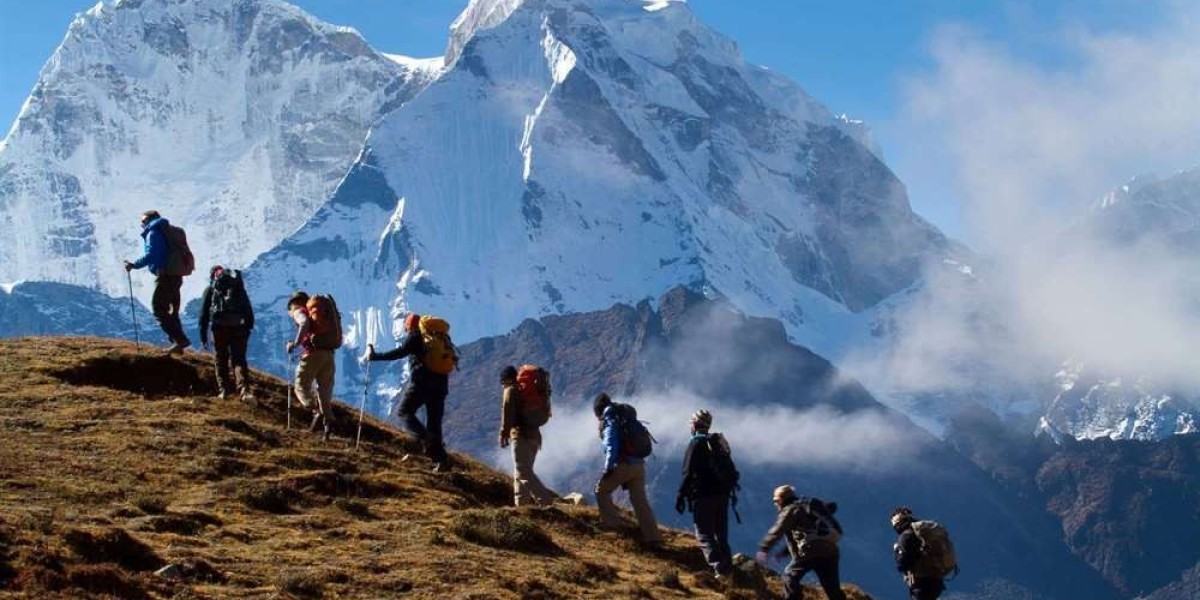In a world that’s constantly rushing, few experiences offer the grounding, thrill, and serenity of walking through nature. Trekking & Hiking Tourism is fast emerging as one of the most immersive ways to explore India’s diverse landscapes—from snow-covered Himalayan passes to lush Western Ghats trails and desert canyons in Rajasthan.
Whether you're a seasoned trekker chasing altitude or a weekend hiker seeking forest solitude, India’s trekking circuits offer something for every pace and passion. With curated trails, eco-conscious stays, and local guides, trekking & hiking tourism is not just about reaching the summit—it’s about the stories, silence, and soul-searching along the way.
?️ Why Choose Trekking & Hiking Tourism?
Deep Connection with Nature: Walk through forests, meadows, riversides, and ridgelines—away from crowds and noise.
Physical & Mental Wellness: Trekking improves stamina, reduces stress, and fosters mindfulness.
Cultural Immersion: Meet mountain communities, stay in remote villages, and learn local traditions.
Eco-Friendly Travel: Low-impact tourism that supports conservation and sustainable livelihoods.
Adventure & Discovery: Every trail offers surprises—wildlife sightings, hidden waterfalls, and panoramic views.
? Top Trekking & Hiking Destinations in India
Here’s a curated list of India’s most iconic and accessible trekking circuits, each offering a unique blend of terrain, culture, and challenge:
1. ?️ Valley of Flowers & Hemkund Sahib, Uttarakhand
Ideal For: Beginners, nature lovers, spiritual seekers
Duration: 6–7 days
Highlights:
UNESCO World Heritage alpine meadows
Blooming wildflowers (July–August)
Sacred lake and Gurudwara at Hemkund Sahib
Easy to moderate trail with scenic campsites
Best Time: July to September
2. ? Triund Trek, Himachal Pradesh
Ideal For: Weekend hikers, solo travelers, photographers
Duration: 2–3 days
Highlights:
Short trek from McLeod Ganj with stunning views of Dhauladhar range
Camping under stars
Accessible trail with tea stalls and forest paths
Combine with Dharamshala sightseeing
Best Time: March to June, September to November
3. ?️ Kedarkantha Trek, Uttarakhand
Ideal For: Snow lovers, beginners, winter trekkers
Duration: 5–6 days
Highlights:
Snow-covered trails and pine forests
360° summit views of Himalayan peaks
Cozy campsites and local homestays
Popular winter trek with moderate difficulty
Best Time: December to April
4. ? Western Ghats Trails (Coorg, Wayanad, Munnar)
Ideal For: Monsoon trekkers, birdwatchers, wellness seekers
Duration: 2–5 days
Highlights:
Lush rainforests and spice plantations
Trek to peaks like Tadiandamol, Chembra, and Meesapulimala
Waterfalls, caves, and tribal villages
Combine with Ayurveda and coffee estate stays
Best Time: October to March (monsoon treks: June–August)
5. ?️ Rajasthan Desert & Aravalli Trails
Ideal For: Cultural explorers, offbeat travelers
Duration: 2–4 days
Highlights:
Kumbhalgarh to Ranakpur forest trek
Desert hikes near Jaisalmer and Osian
Wildlife sightings in Mount Abu and Sariska
Combine with heritage stays and camel safaris
Best Time: October to February
6. ❄️ Chadar Trek, Ladakh
Ideal For: Experienced trekkers, thrill-seekers
Duration: 8–10 days
Highlights:
Walk on the frozen Zanskar River
Extreme conditions and surreal landscapes
Remote camps and cultural immersion
Requires acclimatization and fitness
Best Time: January to February
? Where to Stay During Treks
Accommodation options vary by region and trail:
Tented Camps: Set up at scenic spots with basic amenities
Homestays: Stay with local families for authentic experiences
Forest Rest Houses: Government-run lodges in protected areas
Eco-Lodges: Sustainable stays with minimal footprint
Tea Houses: Common in Himachal and Nepal-border treks
? What to Pack for Trekking & Hiking Holidays
Sturdy trekking shoes and extra socks
Layered clothing (thermal, fleece, waterproof)
Backpack with rain cover
Water bottles, energy snacks, and first-aid kit
Headlamp, trekking poles, and sunscreen
ID proof and permits (if required)
? Best Seasons for Trekking & Hiking Tourism
Region | Season | Highlights |
Himalayas | Mar–Jun, Sep–Nov | Clear skies, pleasant weather |
Western Ghats | Oct–Mar | Cool climate, lush greenery |
Desert Trails | Oct–Feb | Mild temperatures, cultural festivals |
Snow Treks | Dec–Feb | Snow-covered landscapes, winter camping |
Monsoon Treks | Jun–Aug | Waterfalls, misty forests |
? Wildlife & Nature Encounters
Trekking trails often pass through rich biodiversity zones:
Himalayan Monals, musk deer, and snow leopards in Uttarakhand
Langurs, hornbills, and elephants in Western Ghats
Desert foxes and peacocks in Rajasthan
Alpine flowers, butterflies, and medicinal plants
Always follow Leave No Trace principles and respect wildlife.
? Cultural Add-Ons to Trekking Holidays
Many trekking routes offer cultural immersion:
Village Walks: Learn about local crafts, cuisine, and customs
Temple Visits: Ancient shrines along trails
Festivals: Plan treks around local fairs and celebrations
Cooking Demos: Try regional dishes at homestays
These add depth and authenticity to your trekking experience.
? Travel Tips for Trekking & Hiking Tourism
Acclimatize properly for high-altitude treks
Hire certified guides and porters for safety and support
Carry reusable bottles and avoid plastic waste
Respect local customs and dress modestly
Check weather and trail conditions before departure
? Why Book Trekking & Hiking Tourism Packages?
Booking a curated trekking package ensures:
Expert Planning: Permits, logistics, and safety handled by professionals
Local Insights: Guides who know terrain, culture, and biodiversity
Comfort & Safety: Especially important in remote or high-altitude areas
Custom Experiences: Tailored to your fitness level and interests
Sustainable Travel: Supports local communities and eco-tourism
Whether you're chasing summits or strolling through forests, trekking & hiking tourism offers a soulful, scenic, and sustainable way to explore India.







